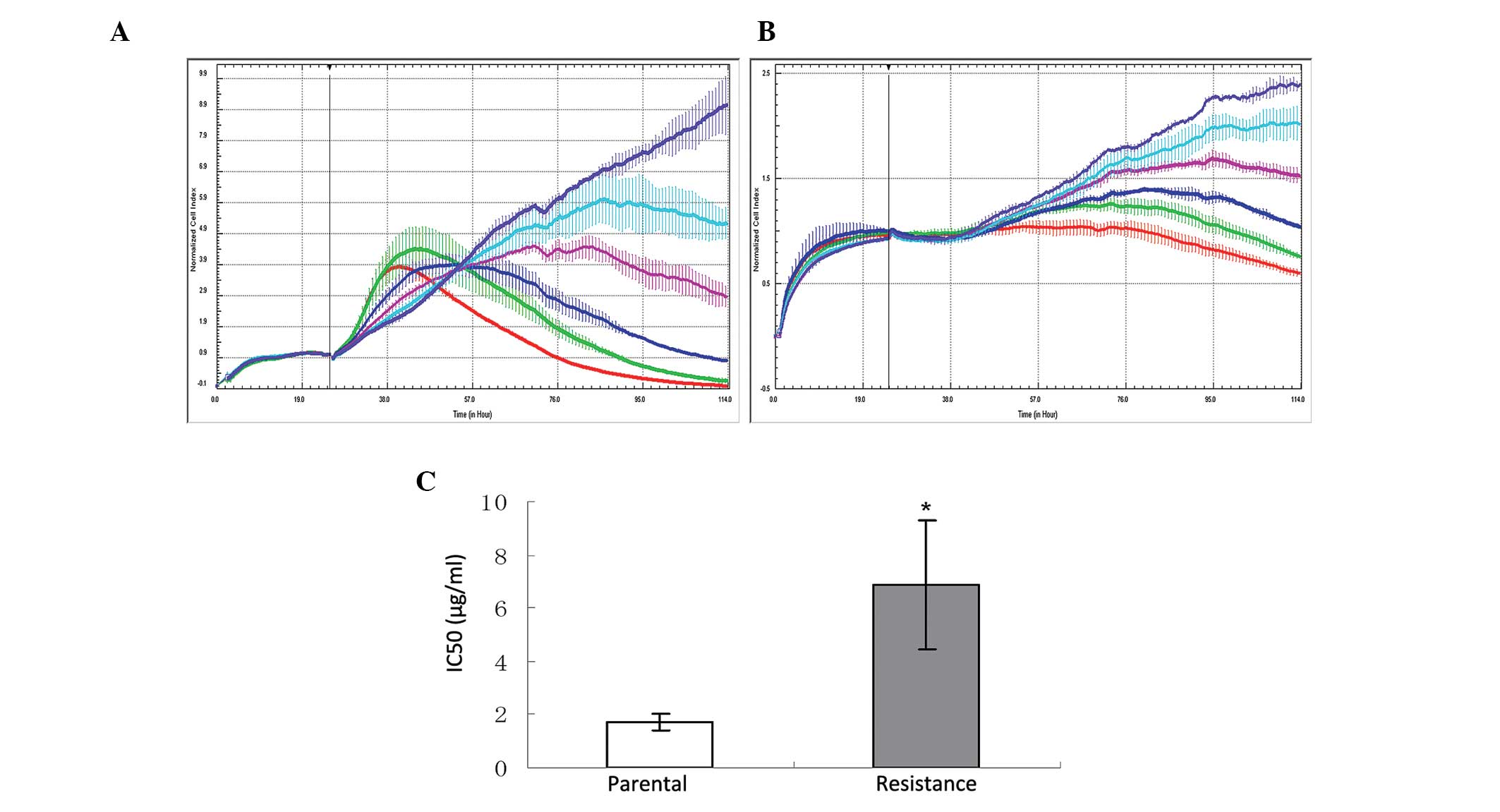The aim of a recent study, published by a team led by researchers from Sichuan University, was to establish, characterize and elucidate the potential mechanisms of acquired gefitinb resistance, using an A549 human lung cancer cell line. In their experiment, a gefitinib‑resistant A549 sub‑clone was established by exposure to escalating gefitinib concentrations over a period of 16‑24 months. Half maximal inhibitory concentration (IC50) values were quantified using a real time cytotoxicity assay. The expression profiles of the parent and resistant sub‑clone A549 cells were detected using LC Sciences’ microRNA (miRNA) microarray service. Using the ArrayPro software, the differential expression levels of the miRNA were analyzed and bioinformatics software was used to predict the potential target genes of the differentially expressed miRNAs. Quantitative polymerase chain reaction (qPCR) was used to confirm the results of the miRNA microarray. A miRNA mimic was transfected into the gefitinib‑resistant cells, in order to predict target gene interaction effects, following gefitinib treatment. The protein expression level differences were confirmed by western‑blot analysis amd real time cytotoxicity assays revealed a 3‑fold increase in the IC50 values of the gefitinib‑resistant sub‑clones, as compared with the parent cells. The team noted there were marked morphological differences between the parent and resistant cells. In the microarray analysis, the gefitinib‑resistant sub‑clones had 25 upregulated and 18 downregulated miRNAs, as compared with the parent cells. The qPCR revealed that miR‑7 was significantly downregulated, which was concordant with the results of the microarray. The results of this recent study suggest that miR‑7 may significantly improve the sensitivity of cancer cells to gefitinib. The data presented by this research team provides an experimental basis and theory that miRNAs may be involved in acquired gefitinib‑resistance of lung adenocarcinoma, and miR‑7 may have potential clinical effects in the reversal of drug resistance.
Paired half maximal inhibitory concentration (IC50) calculations were conducted to verify gefitinib resistance

Gefitinib was added to the control and developed resistance A549 lung cancer cells at 24 h, with multiple graded concentrations. (A) Control cell line response to gefitinib treatment. (B) Resistant cell line response to gefitinib treatment. (C) IC50 values, as determined using integrated software, with equation area-under-curve dose-response. *P<0.05.
Related Service
miRNA Microarray Service – LC Sciences provides a microRNA (miRNA) expression profiling service using microarrays based on our in-house developed µParaflo® technology platform. We have standard arrays for all mature miRNAs of all species available in the latest version of the miRBase database (Release 21, July 2014). Our service is comprehensive and includes sample labeling, array hybridization, image data processing and in-depth data analysis. Two-three weeks after receiving your total RNA samples, we’ll send you both the raw and fully analyzed data. [Learn more…]
Reference
Xiaojun Ge, Limei Zheng, Min Huang, Yonglun Wang, Feng Bi (2014) MicroRNA expression profiles associated with acquired gefitinib‑resistance in human lung adenocarcinoma cells Molecular Medicine Reports 11(1) 333-340 doi: 10.3892/mmr.2014.2757 [article]
